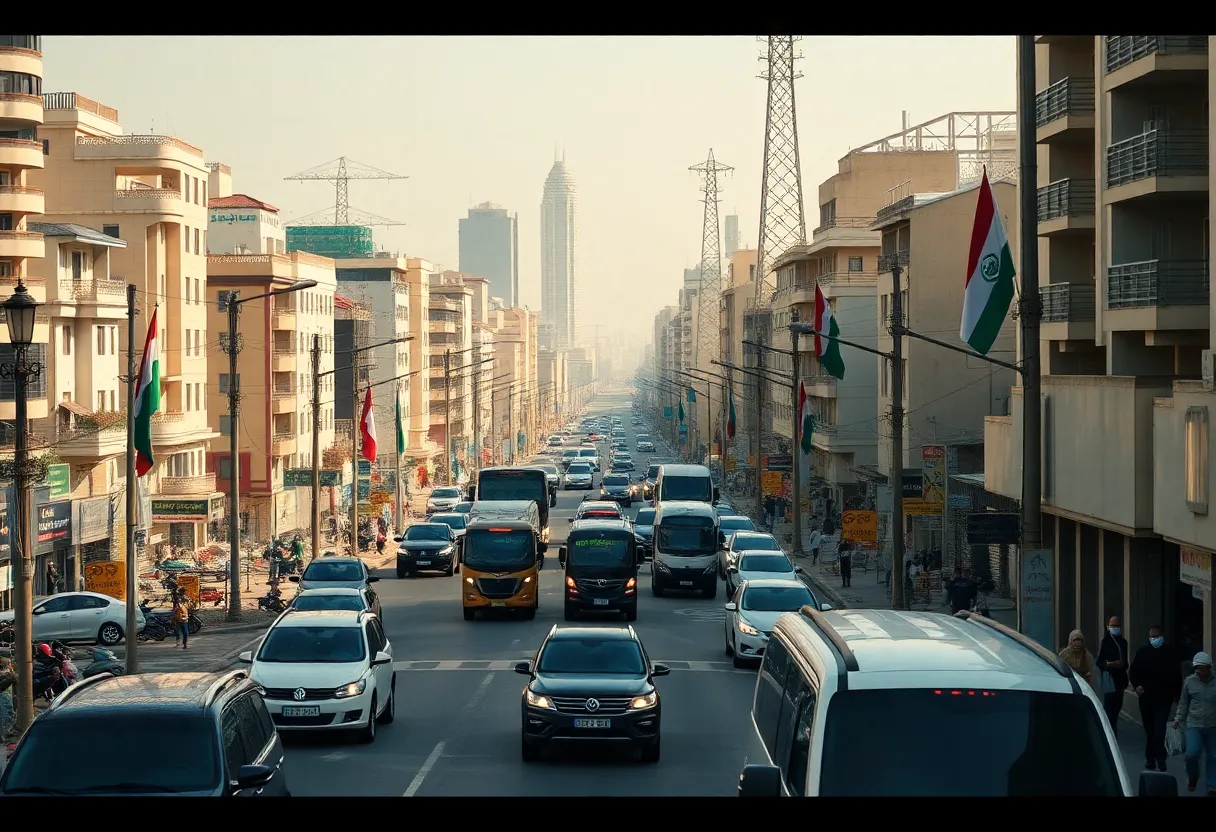News Summary
Iran is facing a severe power crisis with daily outages disrupting lives, while its economic situation worsens. Citizens express frustration and envy at technological advancements in neighboring Arab nations, particularly during U.S. President Trump’s recent visits. Meanwhile, discussions around a potential nuclear deal could bring changes to the economy, including increased oil exports. As Iran navigates these turbulent times, the leadership shows signs of reconsidering negotiations with the U.S. in hopes of stabilizing the nation’s future.
The Ongoing Struggles in Iran: Power Outages and Economic Woes
As the world looks on, Iran finds itself grappling with a severe power crisis and a beleaguered economy that continues to spiral downwards. Meanwhile, in stark contrast, U.S. President Trump has been strengthening ties with Arab nations, showcasing their advancements in technology and economic growth. During his recent stops in **Saudi Arabia**, **Qatar**, and the **United Arab Emirates**, Trump announced multibillion-dollar deals, emphasizing the growing economic partnership with the United States.
Power Outages: A Daily Struggle
Back in Iran, residents are feeling the brunt of daily **power cuts** that last several hours at a time. With traffic lights often rendered inoperable, the streets become chaotic as people contend with significant disruptions in their daily routines. To address the situation, the Iranian government has made some adjustments, including changing school hours to start at 6 a.m. This shift illustrates the challenges citizens face in maintaining any semblance of normalcy.
Feelings of Envy and Frustration
Amid these struggles, many Iranians are grappling with emotions of **envy**, **regret**, and **anger** directed towards their own government.** A notable example is Majid, a 34-year-old computer programmer in Tehran, who expressed concern about how far behind Iran seems compared to the technological progress made by neighboring countries, especially Saudi Arabia. With advanced infrastructure and modern conveniences at their fingertips, the disparity is becoming increasingly hard to ignore.
Media Coverage: A Tale of Two Worlds
The Iranian state television is thoroughly covering the country’s dilemmas, highlighting the acute energy and economic crisis that the nation faces. On the flip side, foreign satellite channels are closely tracking Trump’s visits and his discussions around peace and nuclear agreements. This contrast only serves to heighten the sense of frustration felt by many within Iran, as they observe advancements in rival nations.
Potential Nuclear Deal and Its Economic Impact
Interestingly enough, as the Middle East focuses on diplomatic talks, oil prices have been fluctuating drastically. With talks of a potential nuclear deal between the U.S. and Iran, Brent crude futures have seen a drop of **2.36%** while West Texas Intermediate fell by **2.42%**. There seems to be a flicker of hope for Iran, with indications from an advisor to Iran’s Supreme Leader suggesting a willingness to negotiate, provided certain conditions are met. This could open the door to lifting some economic sanctions, which would be a tremendous relief for the struggling nation.
The Road Ahead for Iran’s Economy
If a nuclear deal is reached and enforced, experts suggest that it could allow Iran to bump up its oil exports significantly—by as much as **1 million barrels per day**. Such an increase could potentially alter oil market dynamics, much to the concern of OPEC+, which is already strategizing ways to regulate production to mitigate price impacts.
Turbulent Times: The Ripple Effects
Since the U.S. withdrew from the nuclear agreement in 2018, Iran’s economy has dramatically declined. This downturn has resulted in public protests and widespread frustration, with many wondering what the future holds for their country. The situation worsened even further after the collapse of the Assad regime in Syria, Iran’s crucial regional ally.
Leadership Shift: Possible Changes Ahead
In a surprising twist, Iran’s Supreme Leader, who initially opposed negotiations with the U.S., has reportedly been swayed by senior officials who stress that negotiating for the nation’s survival is key. This policy shift might just open up a new chapter for Iran, one that could potentially lead to both economic stabilization and an alleviation of pressure on everyday citizens.
As this situation unfolds, both the international community and the people of Iran will be watching closely to see how these negotiations, infrastructure challenges, and political decisions continue to shape the landscape of the region.
Deeper Dive: News & Info About This Topic
- CNBC: Oil Prices Fall After Trump Raises Hopes of a US-Iran Nuclear Deal
- Bloomberg: Latest Oil Market News and Analysis for May 15
- MarketWatch: Impact of Trump Nuclear Deal with Iran on Global Oil Supplies
- Reuters: US Imposes Iran-Related Sanctions on Third China Teapot Refinery
- Wall Street Journal: Trump Says Deal with Iran Close, Oil Prices Fall
- Wikipedia: Iran
- Google Search: Iran economy
- Google Scholar: Iran nuclear deal
- Encyclopedia Britannica: Iran
- Google News: Iran power outages

Author: STAFF HERE PHILADELPHIA WRITER
The PHILADELPHIA STAFF WRITER represents the experienced team at HEREPhiladelphia.com, your go-to source for actionable local news and information in Philadelphia, Philadelphia County, and beyond. Specializing in "news you can use," we cover essential topics like product reviews for personal and business needs, local business directories, politics, real estate trends, neighborhood insights, and state news affecting the area—with deep expertise drawn from years of dedicated reporting and strong community input, including local press releases and business updates. We deliver top reporting on high-value events such as Mummers Parade, Philadelphia Flower Show, and Thanksgiving Day Parade. Our coverage extends to key organizations like the Greater Philadelphia Chamber of Commerce and United Way of Greater Philadelphia, plus leading businesses in telecommunications, food services, and healthcare that power the local economy such as Comcast, Aramark, and Children's Hospital of Philadelphia. As part of the broader HERE network, we provide comprehensive, credible insights into Pennsylvania's dynamic landscape.





